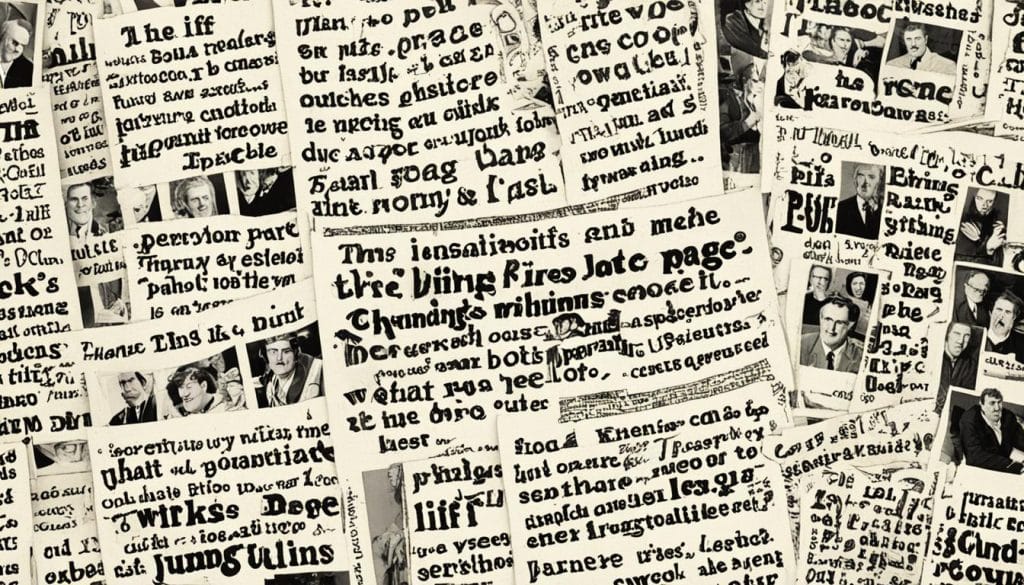Have you ever thought your life’s story should be shared with others? Memoir writing lets you tell your personal history in a deep way. It’s a chance to explore techniques that make your story touch others’ hearts. You don’t just list events. You share the feelings and lessons that shaped you.
Key Takeaways
- Memoir writing involves sharing personal growth, connections, and history preservation through storytelling.
- Unlike autobiographies, memoirs focus on a snapshot of life, capturing universal truths and lessons.
- Integrating memoir writing techniques can enhance the narrative, making it more impactful.
- Successful memoirs often combine personal narrative with practical wisdom, offering readers deeper reflections on their own journeys1.
- A well-crafted memoir can provide hope and guidance for readers, bridging the gap between personal history storytelling and self-help1.
What is Memoir Writing?
Memoir writing is a unique way of sharing stories from a person’s life. It lets the author tell about specific times or themes that have shaped them. Through these stories, they reflect on their experiences and the impact of those moments.
Definition and Characteristics
Memoirs bring personal stories to life, focusing on transformative events and deep insights. They differ from autobiographies by concentrating on specific aspects of life. Memoirs use vivid storytelling and emotional truths to connect with readers2.
Difference Between Memoir and Autobiography
While memoirs and autobiographies share similarities, key differences exist. Autobiographies detail the author’s entire life, from birth to present. Memoirs, on the other hand, focus on particular themes or periods. They often use creative storytelling methods2. Memoirs are known for their engaging and emotional narratives3.
Importance of Memoir Writing
Memoir writing is valuable for its power to connect writers and readers. It captures and shares defining human experiences. These stories serve as personal histories and teach important life lessons for the future4. Memoirs act as a bridge between generations, offering stories that are both relatable and profound.
| Memoirs | Autobiographies | |
|---|---|---|
| Focus | Specific themes, periods, and emotional experiences2 | Comprehensive life story from birth to present2 |
| Structure | Flexible, often non-chronological2 | Chronological, follows the life span2 |
| Reader Engagement | High due to emotional and vivid storytelling3 | Varies, generally more factual and chronological3 |
| Examples | “A Heartbreaking Work of Staggering Genius” by Dave Eggers, “Eat, Pray, Love” by Elizabeth Gilbert2 | “Long Walk to Freedom” by Nelson Mandela, “The Autobiography of Malcolm X” by Malcolm X and Alex Haley2 |
Why Write a Memoir?
Writing a memoir is a journey that helps you discover more about yourself. It lets you explore your life deeply and grow from it. Memoirs are not like regular autobiographies. They focus on specific events and how you see them now. This creates a personal and reflective story5. By sharing your key moments and changes, you learn more about who you are and how you’ve changed.
Personal Reflection and Growth
A memoir is a powerful tool for self-discovery. It lets you look back at important moments and learn from them. Writing down your experiences helps you see how you’ve grown. It also points you towards improving even more. By including conversations and scenes, your story becomes more interesting and easy to connect with6.
Connecting with Others
Memoirs can help build strong connections with readers. They allow you to share experiences that others might relate to. This creates a feeling of unity and understanding. Sharing emotions and stories builds trust and empathy among different people6. Writers like David Sedaris and Tina Fey have reached many people by sharing their lives in engaging ways6.
Preserving Personal History
Memoirs play a big role in keeping history alive. They give future generations a look into your life and the times you lived in. Unlike short essays, memoirs tell longer stories. They focus on important experiences and make them into a story. This storytelling keeps your history and lessons alive for others5. Through memoirs, you ensure your life’s story is remembered and valued.
If you’re interested in writing a memoir, tools and guides are available. Like this one, they provide great tips for telling your story well6.
Finding Your Story’s Core Message
Writing a memoir lets you explore important moments in your life. It reveals truths that connect with readers. A clear main message is key for an impact. This message is the heart of your story, guiding the plot. To find this, think deeply and plan your story well.
Identifying Key Themes
Finding key themes is critical when writing a memoir. These themes tie your story together, helping readers see their own stories in yours. Common themes include loss, courage, and growth. In “Four Funerals and a Wedding,” the theme of loss is explored through the death of loved ones in 17 months, offering a moving narrative thread7.
Reflecting on memories and categorizing them enhances theme recognition. It also gives your memoir a structured frame8.
Determining Your Universal Truth
Your story’s universal truth makes it relatable. It comes from unique experiences and lessons. For instance, the value of supportive relationships in tough times is a universal truth, seen in stories about new widowhood7. Similarly, embracing vulnerability leads to growth, showing the importance of emotional honesty8. Like in “The Wizard of Oz,” your memoir’s universal truth should be engaging and clear9.
Lessons From Life Experiences
Sharing life lessons is vital in memoirs. These lessons connect your experiences with your readers, offering wisdom. For example, writing in a journal or sending thank-you notes can provide deep insights7. Adding these lessons to your story brings depth and clarifies your main message. Think about key life moments to include, enriching your memoir with meaningful lessons8.
Structuring Your Memoir
When you’re putting together your memoir, you should think carefully about how it’s built. You might think about telling your story in order, but sometimes, that can make things a bit dull. By starting with a huge, life-changing event, like in “Accidental Jesus Freak: One Woman’s Journey from Fundamentalism to Freedom,” you grab your readers from the start. This creates a sense of excitement and keeps them hooked10.
You might also want to tie your memories together with common themes instead of just following a timeline. Jamaica Kincaid does this beautifully in her memoir “My Brother,” linking memories in a way that feels natural and engaging. This way, your story can flow smoothly without sticking to the exact order of events11.
Another cool trick is to play around with how you structure your memoir. For example, you can write different scenes on index cards and then move them around. This lets you see how scenes fit together in new ways. It’s especially good for highlighting the main themes of your story as it unfolds11.
The story “Not the Mother I Remember” uses different viewpoints to tell the tale—how the author saw things as a kid, her thoughts as an adult, and her mother’s perspective. This approach makes the story richer by adding different layers of feelings and understanding. It shows the power of using various narrative techniques10.
Memoir writing comes with many options for structure:
| Structural Variation | Example | Benefits |
|---|---|---|
| Chronological | Traditional Autobiography | Simplicity and clarity |
| Starting with Climax | “Accidental Jesus Freak” | Instant engagement and tension10 |
| Thematic | “My Brother” by Jamaica Kincaid | Reveals underlying themes, non-linear narrative11 |
| Multi-Perspective | “Not the Mother I Remember” | Deeper insights and emotional layers10 |
In the end, your memoir’s structure should take readers on a journey. It should link your personal stories to broader truths. By trying out different ways of telling your story, you can keep it interesting for your readers all the way through.
Crafting Compelling Scenes
Creating compelling scenes in a memoir blends vivid imagery with integrating dialogue. This enhances emotional storytelling. Each detail in your scene must build powerful imagery and genuine emotions. This will truly resonate with readers.
Using Vivid Imagery
Using vivid imagery is key in building scenes. It lets you draw a picture that captures and holds your readers. Sensory memories like smells, sounds, and textures are vital for powerful imagery12. Use specific words to bring out these sensory details. This targets the creative side of the brain12. Such a method adds realism and deepens the connection with your narrative.
Incorporating Dialogues and Emotions
Dialogue is crucial in memoir writing. Capture the unique way people speak to add authenticity12. Part of emotional storytelling is touching on truths and feelings readers can relate to. For example, a small felt mouse, with its emotional story, was sold for $62.00, showing the value of strong dialogues and emotions13. This mix underscores the power of narrative.
Creating Emotional Resonance
To evoke emotional resonance, mix characters’ emotions and physical experiences. The Emotion Thesaurus shows cues for 130 emotions, varying in intensity13. A balance of show and tell keeps your memoir engaging12. These techniques humanize your story, build empathy, and deeply connect with readers. This transforms your writing into an unforgettable emotional journey.
Integrating Self-Help Elements
Adding self-help tips to your memoir makes it more useful and deep. By sharing lessons from your life, your story becomes a source of motivation. This could help readers make positive changes in their own lives. Books like “Lab Girl” and “The Invisible Kingdom” mix personal stories and informative advice well. This mix pulls readers in and makes your story feel more real14.
Highlighting Teachable Moments
Teachable moments are key parts of your memoir. They turn personal stories into lessons everyone can learn from. These moments could be about overcoming work problems or making big personal changes. Highlighting them gives readers valuable insights. It turns your book into a beacon of wisdom, not just a collection of memories15.
Providing Practical Advice
People read self-help memoirs for tips they can use. When you share advice from your life, you give readers tools for facing their struggles. “It’s Not About the Coffee” by Howard Behar is a great example of this. Make sure your advice comes from real-life experiences. This makes your story more meaningful and captures readers’ attention15.
Universal Themes
Including themes everyone can relate to makes your memoir appeal to more people. Themes like beating the odds or personal development connect with many readers. Successful stories combine these big ideas with personal journeys, like in many popular books14. This not only makes your memoir relatable but also keeps it interesting and broad in appeal.
Memoir: Personal History Writing
Writing a memoir is a deep way to share your life stories. It shows how personal experiences reflect bigger historical and cultural scenarios. You tell your own story, connecting with readers on multiple levels. It’s like creating a family tale, linking memories to societal changes and personal roles in history.
Consider Elizabeth Gilbert’s “Eat, Pray, Love” and Jeannette Walls’ “The Glass Castle.” Both memoirs show personal growth during major life events16. Also, “The Diary of a Young Girl” by Anne Frank and “I Know Why the Caged Bird Sings” by Maya Angelou share strong messages about history and perseverance16. These stories are personal but relatable. They show how individual lives are intertwined with larger historical events.
Looking for help with your memoir? The Association of Personal Historians, Inc. offers great support17. Books like “Breathe Life into Your Life Story” and “The Memoir Project” give tips on telling engaging stories and chronicling family histories17. These resources help turn memories into stories worth remembering for generations.
Adding pictures and other media to your memoir can make it even more compelling. “Living Legacies” teaches the value of combining imagery with your stories17. This blends visual elements with your words, capturing both your journeys and their historical importance.
Shanita Hubbard’s “Ride or Die” highlights stories from overlooked communities18. David Dennis Sr.’s book, co-written with his son, shows how interviews can shape a narrative, shedding light on historical impacts through personal and family stories18.
Memoirs have a unique strength. They connect past and present, giving readers insight into life stories that define our world view. Through your stories, you help deepen our understanding of history and its influences on our lives.
Tips for Honesty and Vulnerability
In memoir writing, being honest and open is key. You should share your highs and lows. This creates a real bond with your readers. Being open with your emotions offers true stories, which readers value a lot in memoirs.
Sharing Failures and Successes
Talking about your downs can be as impactful as your ups. Writing about tough times offers a realistic story. Theo Pauline Nestor explains in “How to Sleep Alone in a King-Size Bed” that showing real feelings on paper brings truth and connection19. Using tips from “Writing Is My Drink: A Writer’s Story of Finding Her Voice” can help share these honest moments19.
Avoiding Self-Resentment
Learning to like your flaws rather than hate them makes your story genuine. Trying to be perfect can stop you from being openly emotional, as the term “vomit draft” suggests20. Embracing and learning from these flaws makes your memoir more believable and touching.
Building Credibility and Relatability
To be credible, share your story with real emotions. Poet David Whyte says being vulnerable is part of being human20. Adding insights from Brené Brown’s talks on being open can make your memoir deeper and more relatable19. By being honest about your life, you create a story that truly speaks to people.
In summary, being truthful and open is crucial for a memorable memoir. Following these suggestions can guide you through the challenges of being honest and vulnerable. This makes your story believable and connects deeply with your readers.
Enhancing Engagement with Reflective Questions
Using reflective questions in your memoir can make it more engaging. When readers think about their own experiences, it connects your story with theirs.
Questions like, “Have you ever faced a similar challenge?” make readers dive deeper into your story. They start to see your experiences and their life choices in a new light.
Such questions also underline important lessons and truths in your story. This makes readers more involved and connected emotionally with your memoir.
This approach can lead to better emotional health and more social connections, especially for older readers21. Plus, having a set of reflective questions helps keep your memoir engaging from start to end22.
Look at authors like Carlos Fuentes. They make thinking about and discussing their memories as interesting as writing them23. By adding reflective questions the right way, your memoir becomes a more immersive read.
Maintaining an Inspirational Tone
Writing an inspiring memoir means finding the right mix. Too much optimism can feel fake. But, acknowledging life’s ups and downs keeps it real. Sharing stories that uplift yet stay true can inspire others. It helps people grow by showing them how to stay positive and realistic.
Balancing Positivity and Realism
A good memoir blends hope with truth. People like reading about both the tough times and the victories. For example, sharing both failures and what they taught you is key. This way, you avoid boasting, which can push readers away. In fact, 77% of content looked at said to dodge bragging to keep readers interested24. Sharing how you grew and stayed strong makes your story engaging. Making sure your story matches your audience’s background adds depth25.
Encouraging Personal Growth
Motivational writing is all about showing how you’ve grown. Sharing how you overcame obstacles can inspire others to do the same. These stories spark personal growth in readers. Many writers aim to share hope or inspiration25. Sharing both good and bad times in your journey can help others. Writing also helps you reflect on your own life, even if you don’t publish it26.
Adding self-help tips to your memoir can make it more uplifting. It gives readers real steps they can take. Being honest about remembering and checking facts keeps you trustworthy. Showing your journey honestly, with all its flaws, touches readers the most.
The Role of Details in Memoir Writing
In memoir writing, using specific details helps create a bond with your readers. Descriptive writing lets readers feel the story deeply. Artis Henderson shows the power of this in “Unremarried Widow” with vivid stories that touch the heart27.
Using Specific Descriptions for Deeper Connection
Great memoirs need specific details. They make your story feel like real life and pull readers in. Many writers skip adding sensory details, which are key for memorable stories27.
Adding things like weather and sights makes your story more real. This makes your writing more descriptive and engaging.
Evoking Emotional Responses
Realistic stories in memoirs stir up feelings. Detailed descriptions bring out emotions and connect readers to the tale. Mentioning things like a familiar voice or the smell of your childhood home captures your moments for the readers.
Grounding the Story in Reality
Adding real details also gives your story more depth. Sensory details let readers see the scenes in their minds. Artis Henderson says starting with sensory details makes the story richer27.
Writing these details might take several tries to get right27. This careful crafting makes your memoir more real and believable.
Creating Unforgettable Characters
Creating characters that stick in your reader’s mind is key to writing a great memoir. These characters must have quirks, strengths, and weaknesses. This captures the full spectrum of what makes people real. Shuly X. Cawood writes that giving characters a history and letting them mess up makes them deeper and more likeable Crafting Unforgettable Characters28. This strategy makes your characters feel alive and drives your story.
When telling your story, ensure your characters have unique traits and realistic flaws. Enemies should have their own stories too, explaining why they act the way they do28. A well-developed villain can turn a simple tale into something much deeper.
Even characters who play smaller roles are important. They help carry the story and make your world feel rich28. The technique “Show, don’t tell” is crucial. Describe using senses like sight and sound to bring characters to life. This method makes them feel real and closer to the reader Creating Vivid Characters29. It pulls readers into the story, making the experience richer.
Showing emotions through actions brings truth to your story. Think about real feelings and imagine your scenes to share your characters’ emotions29. Blending these methods into your writing enhances your story. It deepens the reader’s journey without burying them in too many details.
Overcoming Common Challenges in Memoir Writing
Writing a memoir is rewarding but tough. One big challenge is staying objective about family matters. It’s key to be honest yet careful, to avoid hurting others or legal problems. If your story might upset someone, get permission or change details to protect them30.
Deciding what to include or leave out is another tough part. Authors often find it hard to boil down a whole life into a story. Focus on events that shaped you. Memoirs can create strong connections with readers31. Set simple writing goals to keep on track, like a few pages each day32.
It’s also about balancing what’s private and what can be shared. If your story is relatable, it’s less likely to cause legal issues30. Being true in your writing helps show your growth and touches readers31. Remember, overcoming what holds you back is a big part of becoming a writer32. With hard work and careful writing, your memoir can truly shine.







